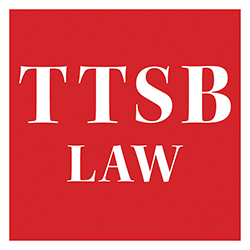Throughout Oklahoma, the ongoing national situation has had a dramatic impact on people’s finances. With medical expenses, lost income due to job loss and other challenges, many are concerned about their financial future and how they and their family will cope. Constant calls from creditors can stoke fear and trepidation. Some are worried that they will lose their homes. Bankruptcy is frequently perceived as a last resort that debtors try to avoid no matter what. In some instances, they will not even consider it. However, personal bankruptcy is a legal and effective strategy to get back into a stronger financial position and move forward without overwhelming debt haunting them.
Recent statistics show bankruptcies have been declining
Given the unpredictability of the ongoing health crisis and the duration for which various forms of governmental relief will continue, it is difficult to assess bankruptcy statistics. In March 2021, there was a spike in people filing for Chapter 7 bankruptcy. In the latest assessment, there was a monthly decrease in Chapter 7 filings since then. For Chapter 13, there was a steady reduction since May. Overall, there were more than 773,600 bankruptcies through September. From that start of the year, that is an 11% drop.
A portion of this is believed to be due to the eviction moratorium. As part of governmental intervention to prevent a financial and housing crisis, people were shielded from being evicted. With that set to end, it is possible that more will choose to file for bankruptcy. This is a wise step for many who cannot pay their bills and are confronted with the intense fear of what happens next.
Knowing the different types of personal bankruptcy
For debtors who are unsure as to which bankruptcy chapter suits them, there are two basic options when thinking about personal bankruptcy: Chapter 7 and Chapter 13. Chapter 7 is a liquidation in which a person’s assets are taken by a trustee and distributed to creditors to pay back as much as possible of what is owed. This does not necessarily mean a person’s property will be taken in full. There are exemptions such as a motor vehicle that is valued below a certain level. In many cases, there are limited or no assets that are valuable enough to be taken and the unsecured debts like credit cards and medical bills will be discharged.
Chapter 13 is a wage-earner’s plan. This is likely preferable for a homeowner as it can let them retain the property while making manageable payments to a trustee each month for three or five years. This is compared to a consolidation loan that will amass the payments into one lump sum each month. This can also reduce what is owed over time. The discharge will not be granted until the plan is done.
Having advice is key when thinking about bankruptcy
There are many cases where bankruptcy is not the preferable option. That said, people with massive debt they cannot pay should consider bankruptcy to end the harassing phone calls, forge a workable plan and improve the financial future. It is imperative that the process is followed according to the law. For those who are already dealing with the emotional, personal and financial ramifications of substantial debt, it is easy to make mistakes when considering bankruptcy and moving forward with the process without legal guidance. For assistance with a case and to address any issues that might arise, it is wise to have help with determining a path and making it a success.

